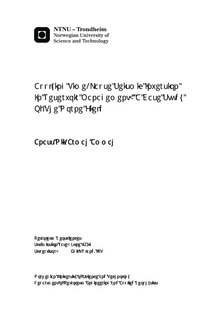Applying Time-Lapse Seismic Inversion In Reservoir Management: A Case Study Of The Norne Field
Master thesis
Permanent lenke
http://hdl.handle.net/11250/239790Utgivelsesdato
2012Metadata
Vis full innførselSamlinger
Sammendrag
Time-lapse seismic inversion approach to reservoir management has proven to be a vital tool in the industry today because of its effectiveness in tracking the movement of fluid front within the reservoir as well as identifying isolated bypassed accumulations. A base (2001) and three monitor (2003, 2004 and 2006) seismic surveys from the Norne field were inverted during this research. Water and gas have been injected into the reservoir to maintain the initial pressure within the field. These seismic surveys were analyzed for time-lapse impedance changes due to the differences in the produced hydrocarbons and the injected fluids. Check-shot corrected well data as well as interpreted horizons were integrated in the inversion process. Two independent wavelets were extracted from base and monitor surveys and combined to form an all-encompassing frequency and amplitude wavelet. The base and monitors were jointly inverted. This is because of the reduction in inconsistencies that are associated with independent inversions of surveys and the production related changes expected in time-lapse inverted seismic data.The results of the inversion show the impedance difference across the field for the various monitor surveys. Areas surrounding producer wells show slight changes in impedance while great impedance difference are observed around injector wells. A statistical analysis of the inversion results also shows steady increase in impedance across the field for the subsequent monitors. Structural and stratigraphic interpretation of the time-lapse inverted data also confirmed the sealing properties of some formations. This sealing property supported the impedance changes within the field. Fault interpretations as well as its sealing and non-sealing properties were inferred from the impedance differences across various discontinuities. Time-lapse acoustic impedance inversion of the Norne post-stack seismic data has revealed the impacts of production, dynamic fluid changes across main identified geologic structures, fluid front migration, fluid communication across structures and segments and other identified stratigraphic elements.
